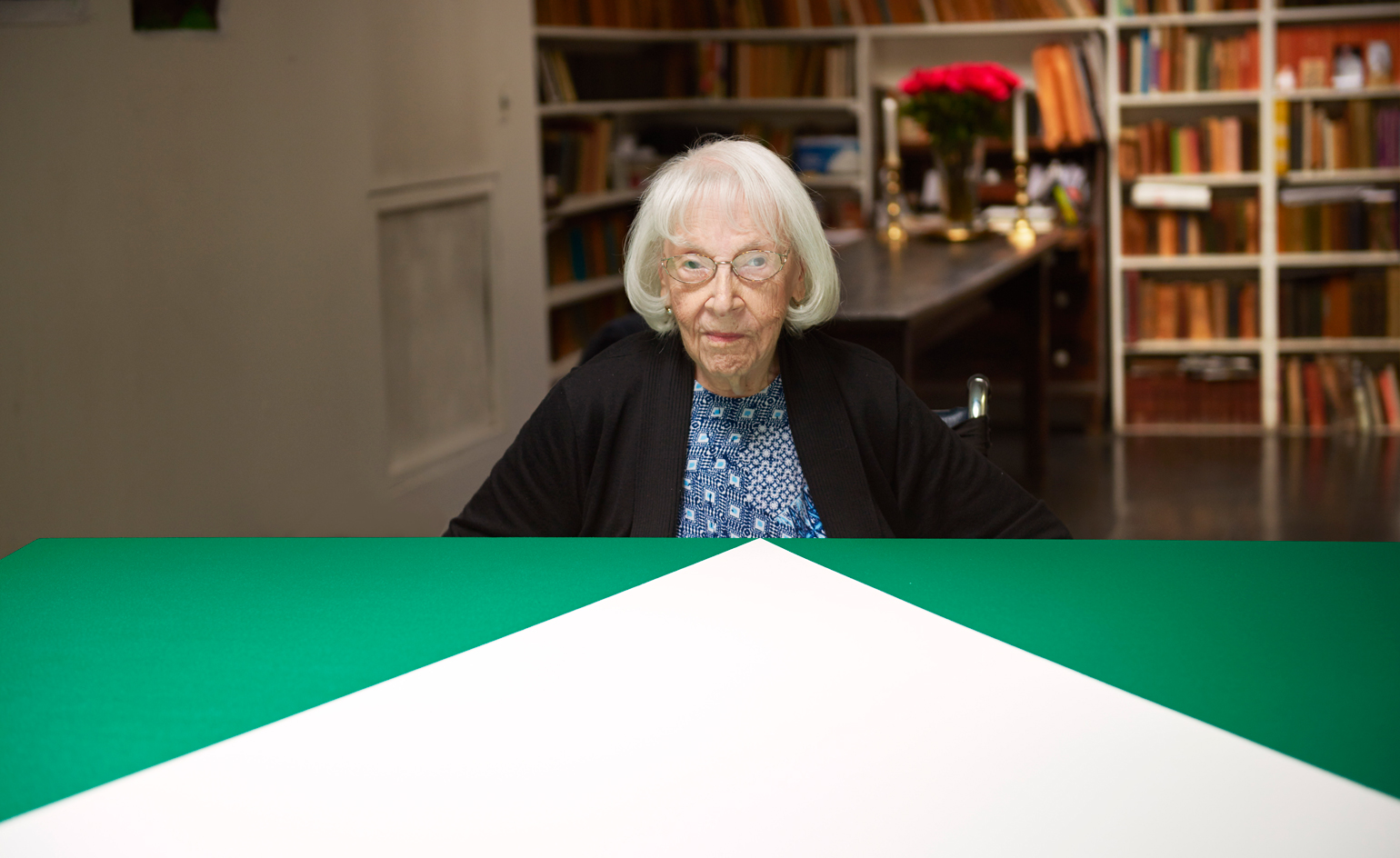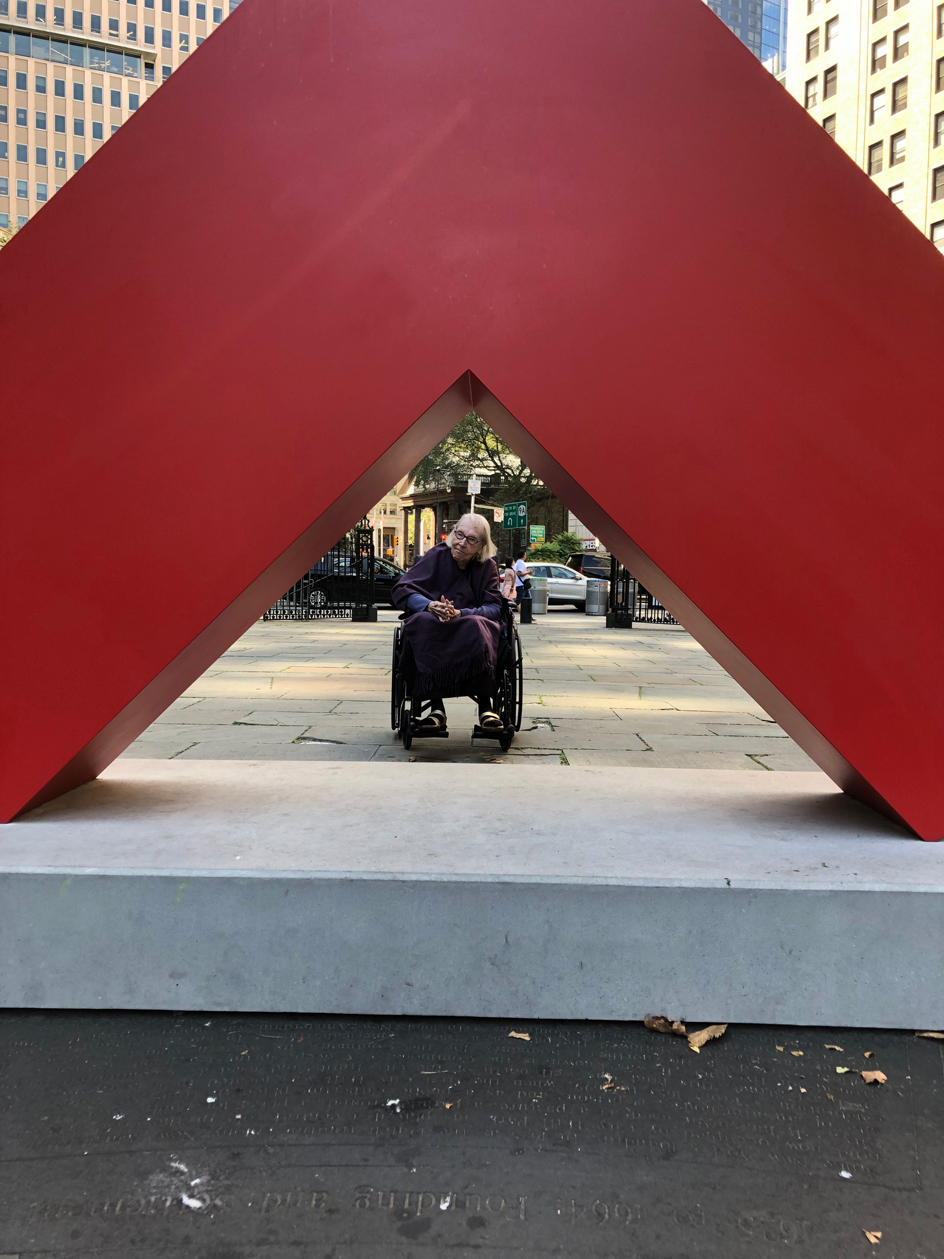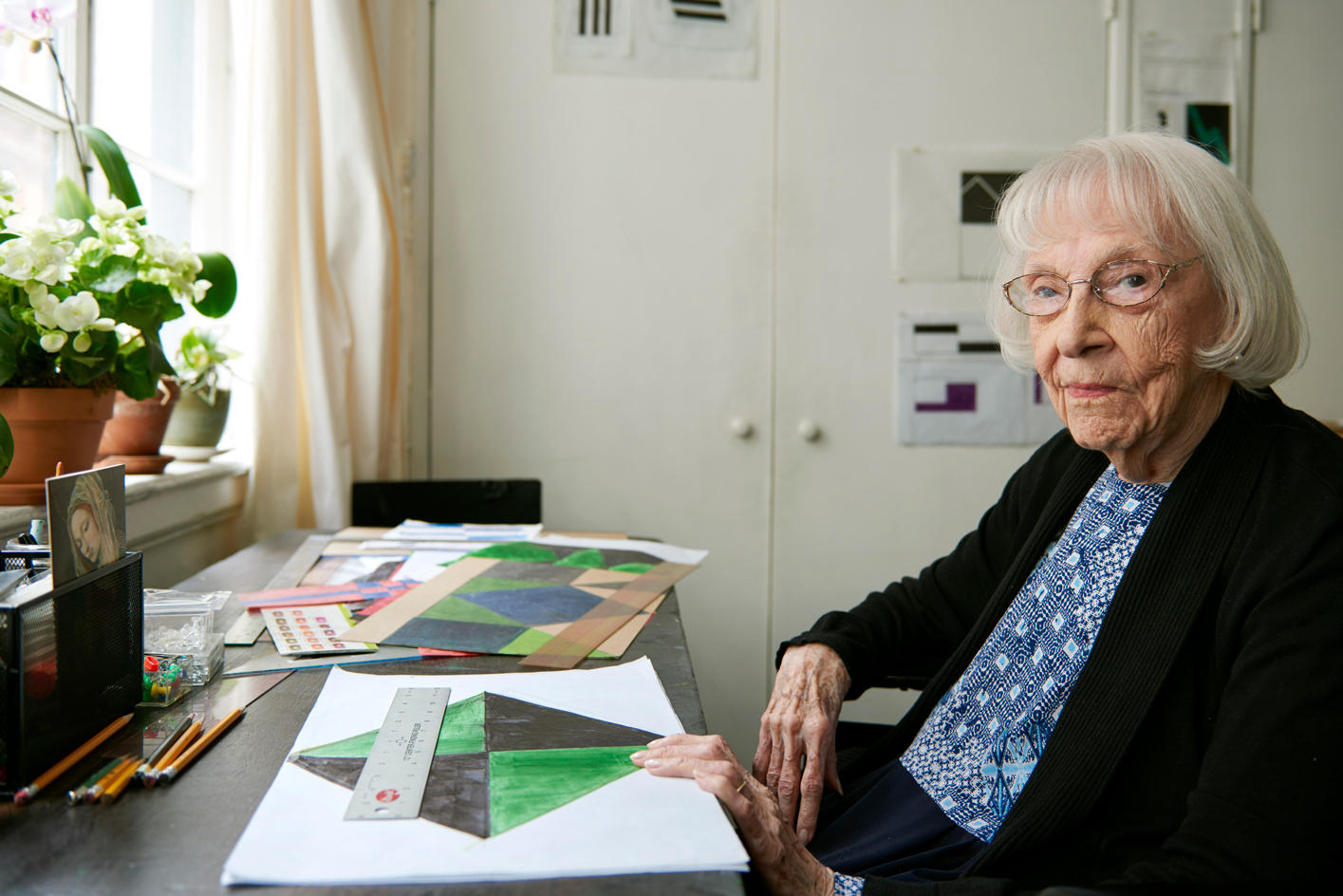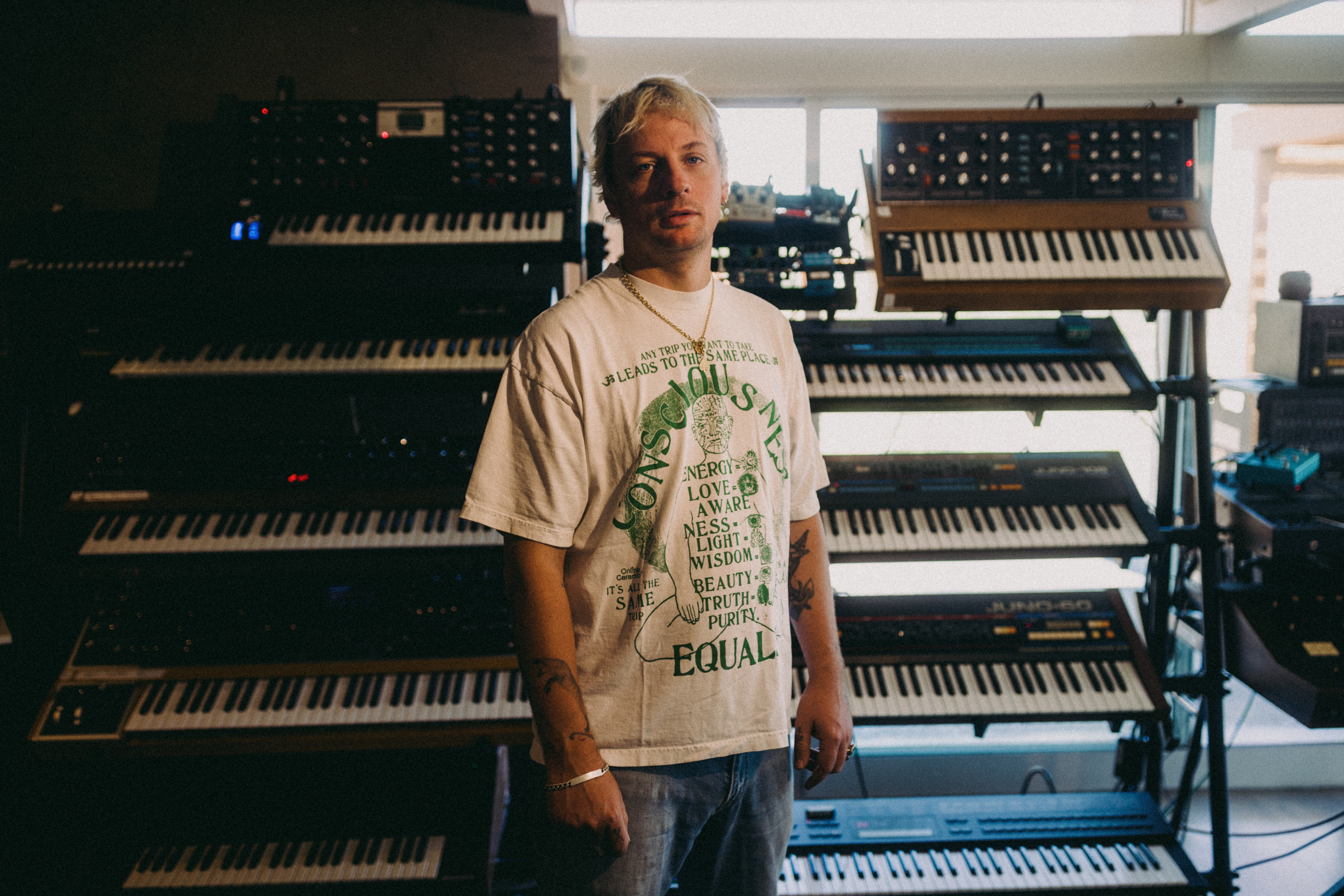The remarkable life of artist Carmen Herrera: 1915-2022
Carmen Herrera, the Cuban-born American artist whose experiments with space and colour blazed a trail in geometric abstraction, has died in New York aged 106

Havana-born American artist Carmen Herrera, a pioneer of 20th-century abstract painting, has died aged 106. She passed away peacefully in her sleep on Sunday 13 February 2022 at her apartment and studio in New York, where she had lived and worked since 1967. Her death was announced by Lisson Gallery, which has represented her since 2010.
Herrera developed a keen interest in painting while studying architecture at Universidad de La Habana, Cuba, in 1938. During this time, she met the love of her life, the American professor Jesse Loewenthal, and together they moved to New York in 1939 where Herrera enrolled at the Arts Students League and further developed her painting practice. The artist frequently travelled to Paris, and became an active member of the Salon des Réalités Nouvelles; she took part in a series of exhibitions alongside Max Bill and Piet Mondrian, among other key figures of the Suprematism movement.


Top: Carmen Herrera and Jesse Loewenthal in front of the Eiffel Tower, Paris, c.1948-53. Above: Carmen Herrera painting, 1941.
Herrera’s earlier work was refined and abstract, characterised by a restrained approach: ‘I began a life-long process of purification, a process of taking away what isn’t essential’, she would later say, reminiscing on work created in her post-war years in Paris. There, she would produce some of her most iconic works, including Green Garden (1950), a striking piece evocative of tropical vegetation and landscapes. Later on, many stylistic comparisons were drawn between Herrera and Ellsworth Kelly, who was also developing his practice in post-war Paris.
In 1954, Herrera relocated permanently to New York. While undoubtedly an icon of abstraction, Herrera was overlooked for much of her career, particularly in relation to her male contemporaries. Her friends Barnett Newman and Leon Polk Smith were fervent advocates of her work, but the art critics at the time were not; Herrera would have to wait decades before her due recognition.
Despite this, Herrera persevered. From the late 1950s to the early 1970s, she explored the gravity of shapes and colours and worked towards the production of Blanco y Verde (1959–1971), a series of 15 paintings that would go on to form one of her most significant bodies of work. This 12-year project was characterised by sharp, emerald-hued triangles painted on white canvases, with edges coated in the same colour – an innovative approach that allowed viewers to perceive the work as both a painting and a three-dimensional structure. This early experimentation with sculpture would eventually lead to the Estructura series comprising monochrome paintings on heavy chunks of wood.

Carmen Herrera visiting 'Estructuras Monumentales', an exhibition by Public Art Fund in City Hall Park, NY on September 25, 2019.
While minimal, Herrera’s work is layered in complex, often deeply personal associations. But her work also harbours a universality, inviting viewers to use their imagination, and establish their own opinions and perspectives.
Closely aligned with Latin American conceptual painting, the oeuvre of Carmen Herrera has initiated, quietly but steadily, a dialogue within the global history of modernist abstraction.
In 2017, Herrera’s work was the subject of a substantial solo exhibition at the Whitney Museum of American Art in New York. The show, ‘Carmen Herrera: Lines of Sight’, curated by Dana Miller consisted of a series of paintings and installations putting the spotlight on 1948–1978, a seminal period in the artist’s career. Herrera also had important retrospectives at the Alternative Museum (1984) and El Museo del Barrio (1998) in New York, as well as at Ikon in Birmingham, UK (2009), curated by Nigel Prince. Herrera also inaugurated Lisson’s first New York gallery in May 2016, with an exhibition of works all made in her 100th year.

Carmen Herrera in her Studio, 2015.
Receive our daily digest of inspiration, escapism and design stories from around the world direct to your inbox.
-
 Year in review: the shape of mobility to come in our list of the top 10 concept cars of 2025
Year in review: the shape of mobility to come in our list of the top 10 concept cars of 2025Concept cars remain hugely popular ways to stoke interest in innovation and future forms. Here are our ten best conceptual visions from 2025
-
 These Guadalajara architects mix modernism with traditional local materials and craft
These Guadalajara architects mix modernism with traditional local materials and craftGuadalajara architects Laura Barba and Luis Aurelio of Barbapiña Arquitectos design drawing on the past to imagine the future
-
 Robert Therrien's largest-ever museum show in Los Angeles is enduringly appealing
Robert Therrien's largest-ever museum show in Los Angeles is enduringly appealing'This is a Story' at The Broad unites 120 of Robert Therrien's sculptures, paintings and works on paper
-
 Nadia Lee Cohen distils a distant American memory into an unflinching new photo book
Nadia Lee Cohen distils a distant American memory into an unflinching new photo book‘Holy Ohio’ documents the British photographer and filmmaker’s personal journey as she reconnects with distant family and her earliest American memories
-
 Ed Ruscha’s foray into chocolate is sweet, smart and very American
Ed Ruscha’s foray into chocolate is sweet, smart and very AmericanArt and chocolate combine deliciously in ‘Made in California’, a project from the artist with andSons Chocolatiers
-
 Jamel Shabazz’s photographs are a love letter to Prospect Park
Jamel Shabazz’s photographs are a love letter to Prospect ParkIn a new book, ‘Prospect Park: Photographs of a Brooklyn Oasis, 1980 to 2025’, Jamel Shabazz discovers a warmer side of human nature
-
 The Hammer Museum in Los Angeles launches the seventh iteration of its highly anticipated artist biennial
The Hammer Museum in Los Angeles launches the seventh iteration of its highly anticipated artist biennialOne of the gallery's flagship exhibitions, Made in LA showcases the breadth and depth of the city's contemporary art scene
-
 Thomas Prior’s photography captures the uncanny fragility of American life
Thomas Prior’s photography captures the uncanny fragility of American lifeA new book unites two decades of the photographer’s piercing, uneasy work
-
 Central Park’s revitalised Delacorte Theater gears up for a new future
Central Park’s revitalised Delacorte Theater gears up for a new futureEnnead Architects helmed an ambitious renovation process that has given the New York City cultural landmark a vibrant and more accessible future
-
 Stephen Prina borrows from pop, classical and modern music: now MoMA pays tribute to his performance work
Stephen Prina borrows from pop, classical and modern music: now MoMA pays tribute to his performance work‘Stephen Prina: A Lick and a Promise’ recalls the artist, musician, and composer’s performances, and is presented throughout MoMA. Prina tells us more
-
 Curtains up, Kid Harpoon rethinks the sound of Broadway production ‘Art’
Curtains up, Kid Harpoon rethinks the sound of Broadway production ‘Art’He’s crafted hits with Harry Styles and Miley Cyrus; now songwriter and producer Kid Harpoon (aka Tom Hull) tells us about composing the music for the new, all-star Broadway revival of Yasmina Reza’s play ‘Art’